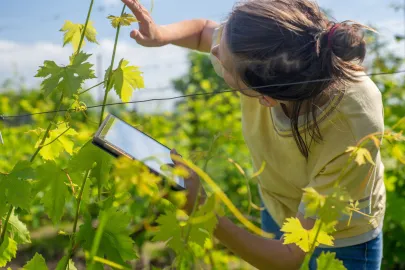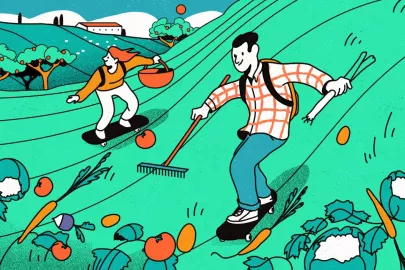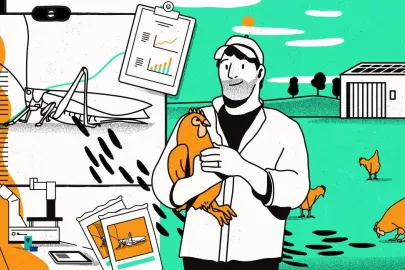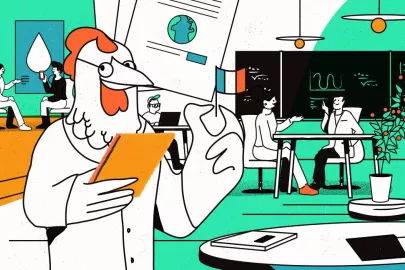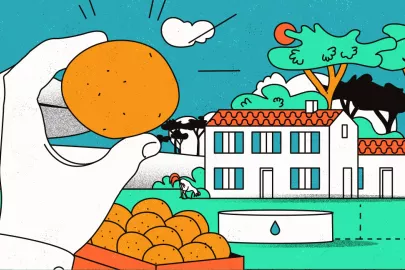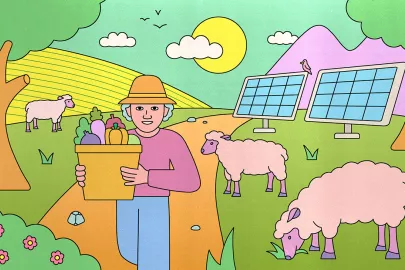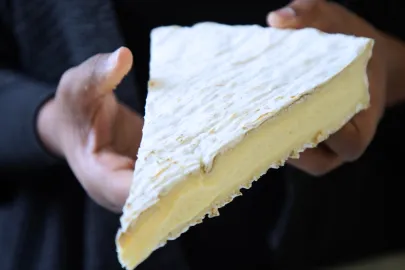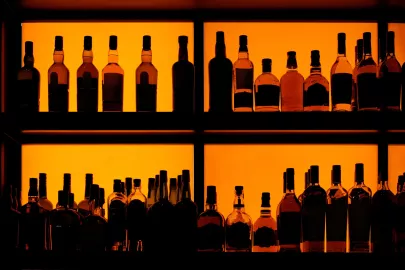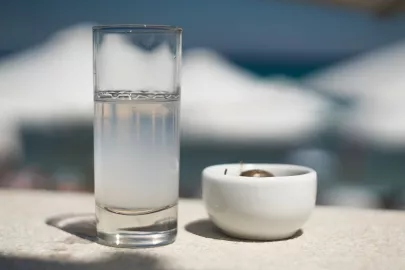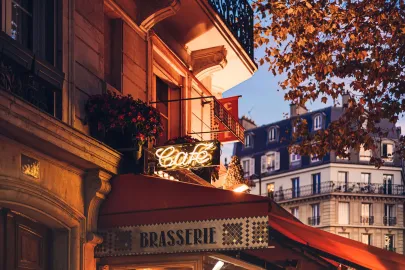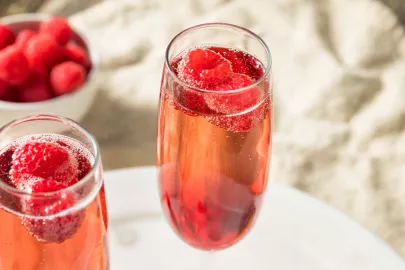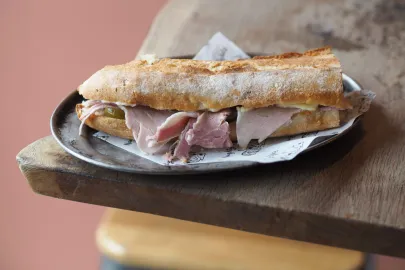Tractors, terroir…and tech? While artificial intelligence might not help in wine tastings (yet) it’s already having a profound impact on its fabrication process and sales. From spotting vine diseases before they appear to predicting yields and even helping choose blends, AI is quietly taking root in French vineyards. And in a sector steeped in tradition, that’s no small revolution. Let’s take a closer look at how AI is bringing real, tangible benefits to French vineyards.
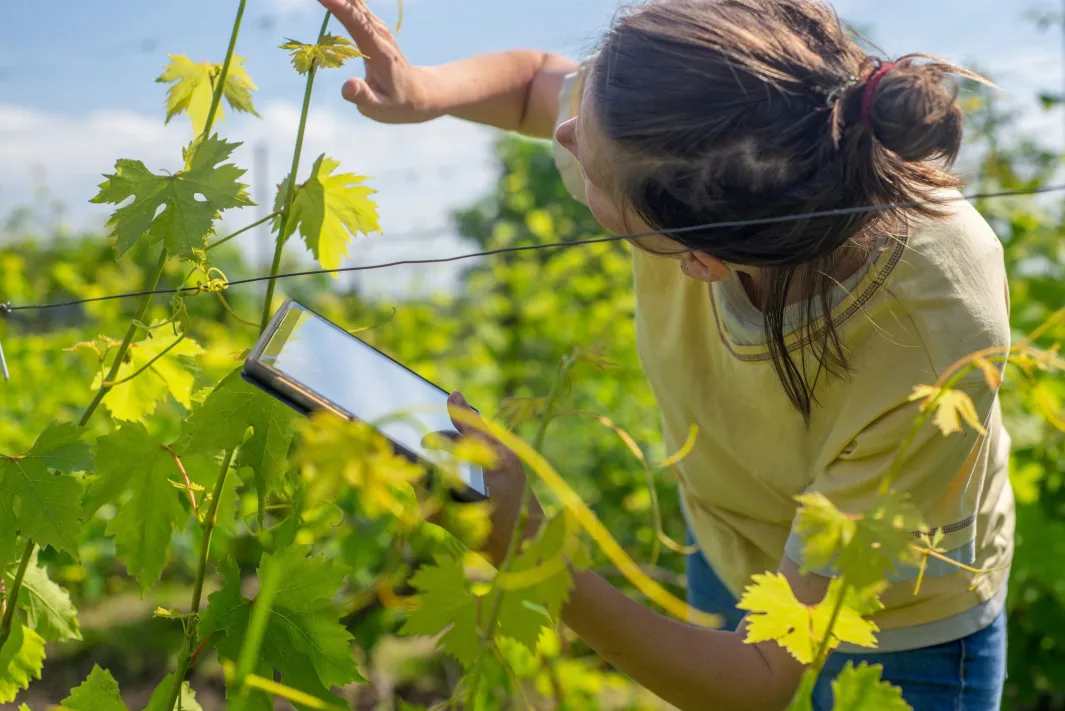
Smarter vines, better wine: AI in the vineyard
First of all, one might wonder what place does technological tools, such as AI, have in the vineyard? Well, far from being just a gadget, it can actually have real, tangible results and help winemakers make even better wine.
Let’s say for example that you’re a winemaker in a traditional French wine region, like Bordeaux. You’ve got hundreds of rows of vines — and a creeping fear of “flavescence dorée”, a fast-spreading disease that can ruin your crop. Did you know that technology, such as Prospect FD, could help you detect way in advance the first blooms of the disease ?
By equipping harvesters with high-resolution cameras that capture detailed images of every vine as the machines pass through the rows, this AI tool can flag visual indicators of disease. That means more targeted field checks, quicker response times, and fewer unnecessary insecticide treatments.
And that’s just the beginning. Robots are also backing winemaking decisions now, such as VineScout, which measures vine stress, soil moisture and temperature to help teams irrigate only where it’s needed, reduce fertilizer use, and strengthen the vine’s natural balance.
So far, most of these tools focus on what’s visible from the outside. But what if the real problem is hiding inside the vine?
This is why researchers in Burgundy and Champagne have launched Scan Me if You Can, an innovative tool that uses sensor data and AI to detect inner signs of decay, non-invasively. It’s basically a kind of MRI for your vines.
Spotting trouble before it starts means being able to take actions before symptoms become visible and act fast to preserve wines that are sometimes century old. And across all these examples, the logic remains the same: less guesswork, more targeted action, and fewer treatments overall — all leading to a more resilient and sustainable vineyard.
Harvesting like a scientist
But AI isn’t just there to help prevent diseases. Did you know that it could help you predict yields ? And not just per vineyard, but within each plot. Tools like Celectiv link GPS data from harvesters with real-time measurements, creating hyper-local yield estimates.
For growers, that means the ability to fine-tune fertilization or adjust pruning strategies from one season to the next. For winemakers, it means better harvest planning, fewer surprises, and a smoother cellar operation once the grapes arrive.
When your entire operation depends on timing, ripeness, and balance — this kind of insight is pure gold.
From the cellar to the shelf: AI beyond the vineyard
AI is also a powerful tool after harvest, helping to reshape work in the cellar. Now, intelligent systems can monitor fermentation in real-time and even predict ideal blends, all based on chemical and sensory data.
And as for training? Virtual reality tools like ReviVRe simulate vineyard tasks such as pruning, allowing workers to practice year-round — safely and efficiently. In an industry grappling with labor shortages, it’s a smart way to maintain high standards.
Finally, on the marketing side, AI is reshaping how consumers discover wine. Apps like Winespace or Tastry help recommend bottles based on flavor preferences, chemistry, or reviews — making it easier to match the right wine to the right drinker and helping smaller producers find their audience in a competitive market.
So, is AI the future of wine?
The goal isn’t to replace the winemaker with AI, but rather to make it their most valuable tool. From early disease detection to harvest planning and fermentation monitoring, AI offers something every vintner needs: more precision, less guesswork, and a chance to reduce environmental impact without compromising quality.
Still, adoption isn’t without its challenges. For smaller estates, cost, complexity, and data overload remain real barriers. That’s why initiatives like Inno’vin in Bordeaux matter — helping bridge the gap between cutting-edge tech and everyday vineyard life, by ensuring tools are built with winemakers, not just for them.
France, with its deep-rooted wine culture and growing strength in agri-tech, is uniquely placed to lead this quiet revolution. And if the future of wine blends tradition with innovation — all the better!

